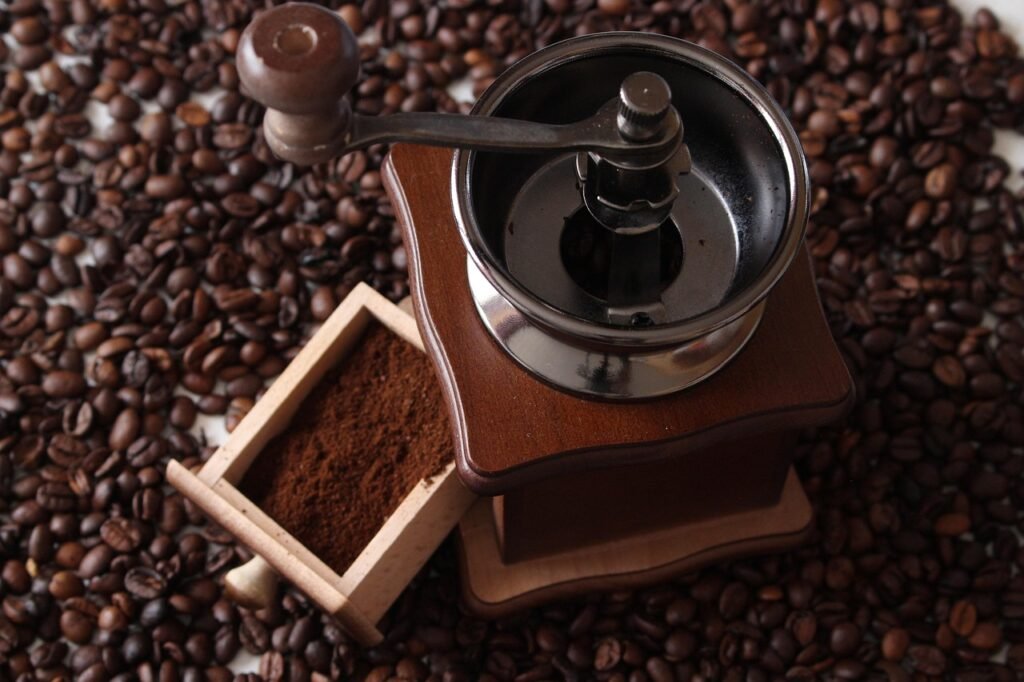
Artisanal Rituals for a Memorable Customer Experience
How can brands create a more balanced and memorable customer experience by blending artisanal product quality with thoughtful everyday rituals that keep people coming back?

Is an espresso blend just a mix of random beans, or a finely tuned recipe for perfection? Diving into the world of coffee blend for espresso reveals the intricate science behind crafting that perfect espresso shot. It’s not just about flavor; it’s about achieving the perfect balance of acidity, body, and sweetness, resulting in a rich and aromatic experience.
This article demystifies the complexities and highlights the artisanal mastery involved in creating blends that elevate your espresso game.
An espresso blend is a mix of different coffee beans, crafted to balance acidity, body, and sweetness. Blending involves choosing beans that work well together, creating a flavor profile that enhances the espresso.
The meaning of an espresso blend is its ability to offer a nuanced cup that appeals to many tastes. The espresso blend ratio is crucial; it dictates the proportion of each bean type, ensuring a consistent taste. These blends are designed to provide the richness and complexity espresso lovers seek, capturing the full potential of each bean.
In the past, coffee blend for espresso were used to hide imperfections in lower-quality beans. Roasters mixed these with superior beans to improve flavor and increase volume.
However, this approach has evolved. Today, blends cater to modern tastes, focusing on quality and consistency. This change reflects a wider appreciation for the unique traits of different coffee varieties and the desire for a blend that matches individual preferences. The modern significance of blending highlights its role in providing diverse flavor experiences while maintaining the essence of traditional espresso.

Selecting the ideal coffee blend for espresso requires thinking about the factors that affect the taste and quality of the final cup. Personal taste is significant; some prefer bold, robust blends, while others like sweeter, more balanced flavors. The brewing equipment also plays a role. A high-end espresso machine might handle a broader range of blends, delivering more nuanced flavors than simpler machines.
The blend’s composition, determined by the roastery’s offerings and available coffee types, provides unique characteristics to meet diverse preferences. The aroma and flavor profile of an espresso blend greatly influence the sensory experience. Aroma is essential because it affects taste perception, enhancing enjoyment and depth. A well-chosen blend gives off an enchanting aroma that fits its flavor profile, whether nutty, fruity, or chocolatey. These sensory traits come from careful bean selection and roasting, ensuring a balance that resonates with the drinker’s palate.
Home-roasting espresso blends offer unmatched freshness and allow for flavor customization not found in store-bought options. It lets you control roast levels and experiment with different beans, creating a blend suited to your taste. Freshly roasted beans provide superior crema and aroma, enhancing both the look and feel of the espresso. Home-roasting also lets enthusiasts explore various bean combinations, creating a unique blend that can change with their preferences.
Lavazza is a big name in espresso due to its commitment to quality and tradition. Founded in Italy, Lavazza is known for creating espresso blends that embody authentic Italian coffee culture. What makes Lavazza a leading espresso brand? It’s their meticulous bean selection and unique roasting techniques that consistently deliver rich, flavorful espressos. Their prominence is boosted by offering a wide range of blends appealing to traditionalists and modern coffee lovers.
Lavazza’s Espresso Italiano and Crema Aroma are standout blends. Espresso Italiano delivers a balanced mix with fruity and floral notes. Meanwhile, Crema Aroma gives a full-bodied taste with robust flavors, complemented by a creamy crema. By catering to various tastes, they ensure satisfaction, whether you prefer subtle or bold flavors.
These blends cater to diverse preferences by offering a range of flavors and intensities. Lavazza, alongside other famous Italian brands, provides options for exploring distinct taste dimensions, from delicate to strong. This adaptability makes Lavazza a versatile choice, ensuring each blend aligns with unique tastes, enhancing coffee rituals, and enriching the espresso experience.

Creating a personal coffee blend for espresso starts with understanding blending basics.
Experimentation is key to crafting a signature blend. Adjust blending ratios and roast levels to find the right balance. Trial and error are important; testing and refining reveal the perfect mix that suits your taste.
This process allows home roasters to uncover blending secrets, adjusting each element until achieving ideal balance. The ability to experiment ensures the final blend is unique and consistently reproducible, providing a rewarding espresso experience every time.
Espresso blends aren’t limited to espresso machines. Their adaptability allows use across various brewing methods like drip coffee, lattes, and cold brew. How can espresso blends suit these methods? It’s their composition that balances intensity and flavor, making them suitable for different extractions.
In drip coffee, they offer a robust brew, and in lattes, the depth complements milk’s creamy texture. Cold brew benefits from the blend’s richness, resulting in a smooth beverage. Each method needs specific grinding and extraction times to maximize the blend’s potential, showcasing its flexibility and appeal to a wide range of coffee drinkers.
Using espresso blends in various brewing methods enhances flavor and the overall experience. The main benefit is flavor depth, adjustable through grind size and brewing time changes. This customization lets enthusiasts explore taste dimensions and create personalized beverages. The versatility of espresso blends makes them ideal for experimenting with different preparations while enjoying a consistent, rich flavor across all methods.
Navigating the world of espresso blends uncovers a rich tapestry of flavors, textures, and aromas that cater to diverse consumer preferences.
From crafting blends that balance acidity, body, and sweetness to selecting popular options like Lavazza, understanding these elements is crucial for coffee aficionados.
Whether home-roasting or exploring various brewing methods, the coffee blend for espresso serves as a foundation of quality and customization.
Embrace the experimentation and diversity of espresso blends to achieve a personalized coffee experience that delights with each cup. Enjoy the journey to coffee excellence on your terms.
An espresso blend is carefully selected for balance in acidity, body, and sweetness. Popular options include Lavazza Espresso Italiano and Crema Aroma, each offering distinct flavor profiles to suit different tastes.
An espresso blend coffee combines diverse beans to create a balanced, flavorful cup of espresso. A well-crafted blend ensures harmony of acidity, body, sweetness, aroma, and crema.
The best grind for espresso is fine, resembling table salt. This grind aids in optimal extraction to develop rich flavors typical of an espresso.
The best espresso bean blend often involves mixing different origins to balance taste. Strong candidate beans include Brazilian for body, Ethiopian for acidity, and Indonesian for complexity.
Yes, espresso blends suit methods like drip coffee and lattes. Adjust grind size and extraction time: coarser for drip, fine for lattes, and coarse with extended steeping for cold brew.

How can brands create a more balanced and memorable customer experience by blending artisanal product quality with thoughtful everyday rituals that keep people coming back?

Independent coffee shops have always been about more than caffeine—they’re hubs of creativity, connection, and care. As café culture continues to evolve, new trends are

Introduction Independent cafes win when they feel like the neighborhood’s living room and operate with the discipline of a great kitchen. Below is a quick

Discover how top specialty coffee brands create lasting loyalty through storytelling, sourcing, and community connection. Real tips from 6 industry experts.

Discover the ultimate showdown between two beloved coffee brewing methods: the French press and Chemex. Explore how each technique caters to distinct palates, with the French press delivering bold flavors and the Chemex presenting a bright, clean taste.

Unlock the secrets to brewing the perfect cup of coffee with our comprehensive guide on using a coffee scale. Discover how precise measurements enhance flavor and consistency while eliminating bitterness.

Discover how water temperature plays a vital role in brewing the perfect cup of coffee. This article delves into the ideal temperature range of 195°F to 205°F for optimal flavor extraction, enhancing the enjoyment of high-quality beans.

Discover the world of curated specialty coffee bundles, perfect for enthusiasts seeking quality and craftsmanship. This article explores the benefits of ethically sourced, small-batch beans from brands like Equipoise Coffee, offering diverse flavor profiles that elevate your brewing experience.

Discover the art of manual brewing to elevate your coffee experience! This article explores various techniques like pour-over, French press, and AeroPress, revealing how they enhance flavor and your connection to every cup.